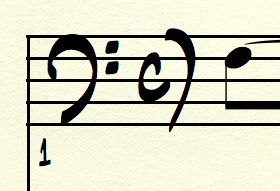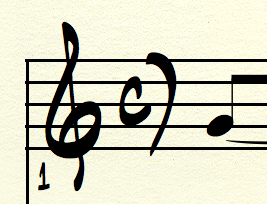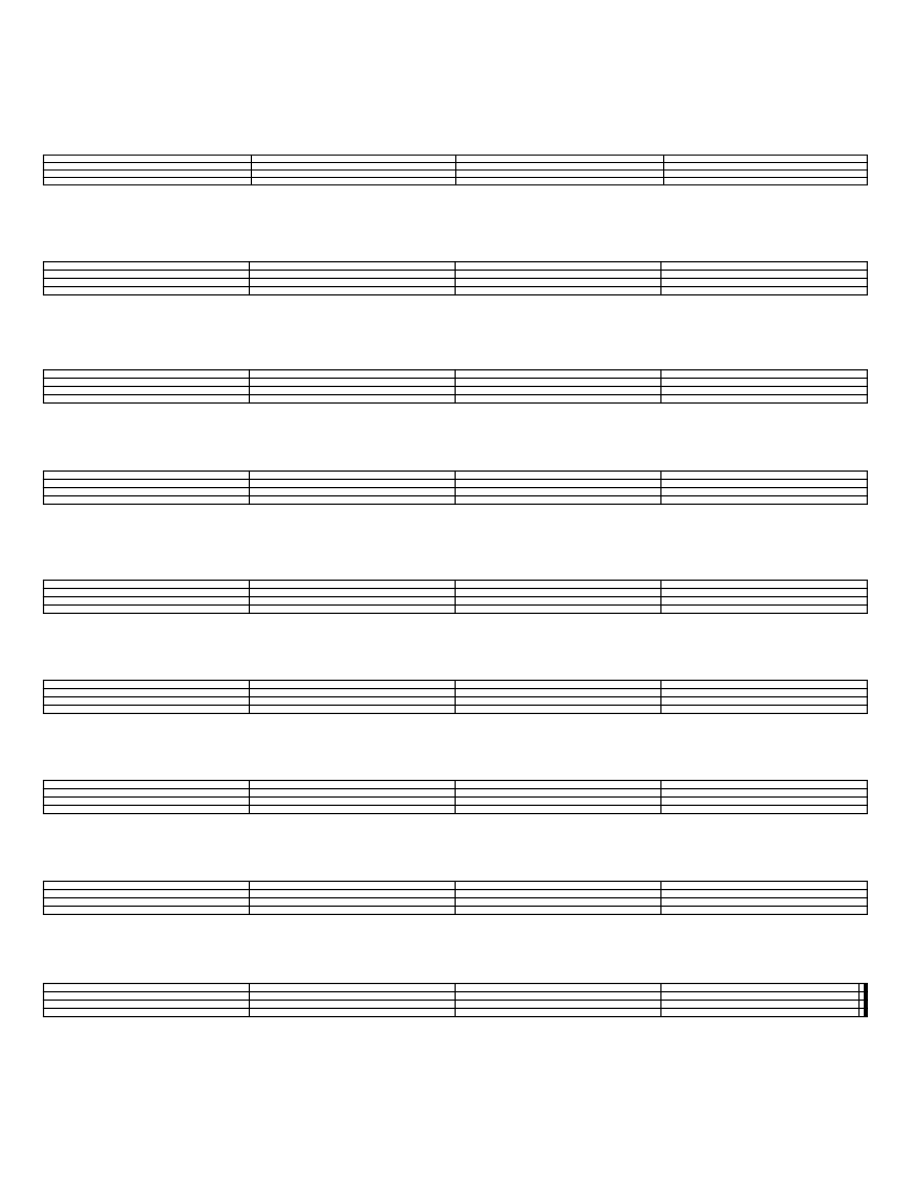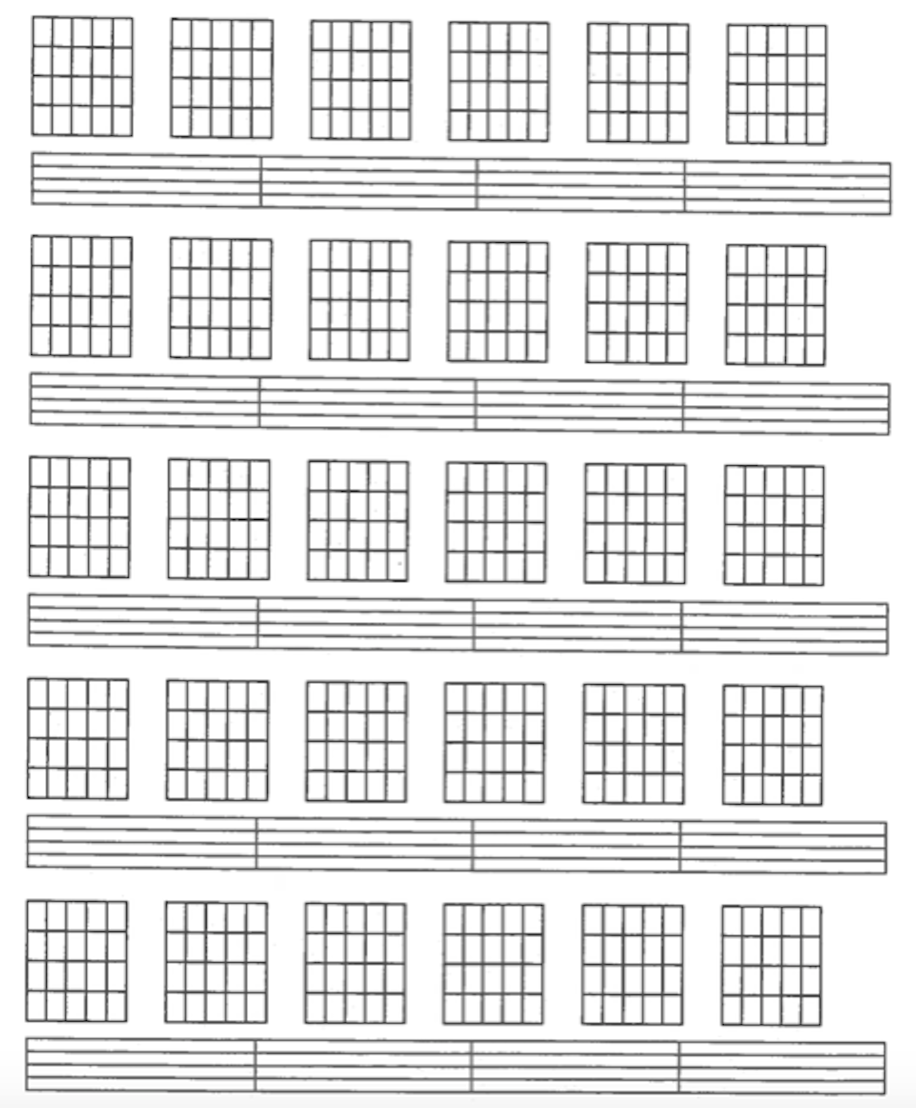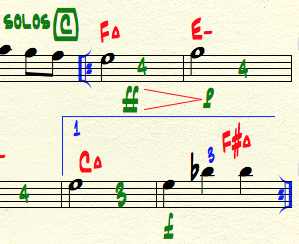Nutshell ~ music flows, learn to read music notation. Decades ago a mentor quipped to me 'it's all just pattern recognition mate, and there's just not that many different patterns, and yet there's just an endless potential for nuance and interpretation. So in reading music, keep your eyes moving along with the tempo of the song, focus and play what you can, concentrate to keep reading, regardless of errors, and you will become a better reader. Promise; like reading words, keep eyes a moving along, reading the notes of melodies u know :) |
Sharing. Please remember, that writing music down, and to a good degree how we write our music down, is also about a way to share what we've got to say as artists. The 'how' of how we write a piece of music is simply about, 'what symbols will be the easiest to read to recreate, and bring to life and capture in time the magic of the melody, and song of the composer's intent. |
Quarter notes. 'That four to the bar' might just swing the hardest; quarter notes on the beat, just choppin' wood, the 'big 4' and the boom boom boom ... of it all. Ready to play along and read too ? Cool, got your ax handy ? Just click the music for playback and commence to read along. Repeating 10 times, read to the end of the phrase then back to its beginning; the eyes following the notes along and their symbols moving through time. In 'C' major, example 1. |
First a leap and then resolution. Now in 'A' minor, four times through a four bar phrase heading to the Fair. Example 1a. |
Learning to read standard notation. Even developing a rudimentary reading ability opens up a vast library of music to the evolving artist. In most cases, it's just about learning new ideas. Do readers get more pro work? Unless we're a star and the feature, or a sideman with such an artist, readers generally get more calls. |
Start with quarter notes. We can learn how to and strengthen our abilities to read music notation simply by reading. It's just another version of rote learning mostly. Here's the basics of pitch letter names as written on the treble clef with a steady quarter note pulse, four beats to the bar. Rote learn them here if need be. Click the music, hear the pitches and sing / count along please, with the 'big four' rhythm. Example 2. |
The pitches of C major. Look familiar ? Brand new to you ? Do you know where 'C' is, how to sound a 'C' note on your chosen instrument? Need help ? |
Bass 'F' clef. The bass clef symbol designates the pitch 'F' on the second line from the top; all the remaining pitches are 'measured' from this starting point. Here are the letter name pitches of the bass cleff, starting 'E', this note will sound one octave higher on a four string bass guitar as the bass, and the six string guitar, are transposing instruments. Example 2a. |
 |
Middle 'C.' The 'C' note in the last measure is the 'middle C' note on a piano and is 'tie in' note to the treble clef. When combined, they become a grand staff. |
Rests. In our notation library of symbols, we've got everything. Every nuance we might conceive of with a musical note is notable with a symbol. To add to the interpretations, we have conductors for large ensembles that help determine how music will go. And while we can notate the sound of a note, we can also notate it's silence in the score, so as to keep our beats and numbers flowing along. Examine the rest symbols. Example 3. |
Cool ? Pretty clear huh ? Yea, we've had this way of notation for around 1000 years now. It has evolved of course through the centuries, but the basics are the same; just a written recording of musical sounds moving along in a metered time. And by learning the symbols we each can join in this tradition of creating community. Launch points. A second super common spot for the rests are in creating a 'pickup' into a melodic idea. For as musical time moves along, some riffs have a lead in note or two, wants to start in the middle of a measure. Generally called a 'pick up', an 'anacrusis' in classical vocab, we get a few notes to jump start our melody notes, give it a bit of a head start into the beat and rhythm of a song. And using the rest symbols is the way we notate the rhythm of the lick, giving it its character rhythm magic for the telling of its story. |
Dynamics. Is simply about the soft to loud range of sounds we apply to crafting our music. 'Piano' meaning soft and 'forte' which implies loud, this range of volume creates that 'inner nuance' that helps our musical phrases capture our own interpretations of melodic lines, that along with pitches and rhythms, foundations our own artistic signature. Always try to remember that for a very very long time now we musicians with instruments, we all played acoustically, so getting things down to a 'whisper' and way up to shout was necessary for capturing the intimacies of our expressions with pitch and rhythm. We can think of our musical dynamics as with our speaking voices in making conversation; we avoid the monotone so often dreaded that sets us to a snoozin', we change the volume of our voices to create curiosity, dramatize the important words of the idea we're sharing, all to help carry the nuance of our message :) With performing music that is written, the dynamic markings are usually written in the score under the staff and correspond to the wishes of the composer. Please examine the dynamic markings in the following music, from a piano soft to forte loud. Example 4. |
Cool ? As improving musicians, a lot of what happens dynamically, modulating soft to loud volumes, is achieved on the bandstand done by hand and visual cues. Also at the top of a new chorus, or change in soloist, or the vocal part returns with the melody, watch and listen for a change in volume or visual cues. Getting 'underneath' the vocals or soloist in volume is the mark of a mature and sensitive performing musical artist. |
Musical dynamics; in performing, improvisation and creating a song's arrangement. Performance. When performing, especially with a band, if the music's dynamics are worked out then all is cool. If not, create a signal for dynamic. Usually not too hard to get the band to loud, getting to soft is often a wee bit trickier. Again, just have a signal that everyone agrees upon. There's some traditional spots where things get quiet; top of the chorus when the vocal comes back in after a solo is one. As a bass player I find that if I get quiet to just under what can be heard, the rest of the band usually follows and then we can build it back up from there. Improvisation. Depending on the musical style, there's traditional rule for dynamics to follow. In 12 bar blues, where a soloist gets two choruses, at the top of the first my band often goes near to a triple piano ... lots of space for the soloist to find their thread. By the top of their second chorus we're starting to head towards loud. Next solo ... back to shh ... ! (shush :) Arrangement for a song. If you're working out an arrangement for a song, especially for a vocalist, easy to find spots to spotlight the voice by getting the band quiet behind them. Any prominent entrance is always a good spot to try, while long stretches of quiet are easily kept track of by the drums. Listen to the music you love and listen for the 'soft / loud dynamics, and emulate the pros until U know your own ways of doing. |
Now find a melody. With pitches in hand, start reading our Americana melodies. The ones included come from the Let Music Ring series for public school. So major key, lots of triads, motion to Four and Six, and songs we might know by heart to begin with. Just gotta find that first one, rote it up deep and keep on keepin' on learning new melodies :) |
